Studio Visit
In Her Home Studio, Soft-Sculpture Artist MiKyoung Lee Gives Form to Twist Ties, Pipe Cleaners, and Thread
The artist’s debut museum exhibition “Threading Memories” is now on view at the Princeton University Art Museum.
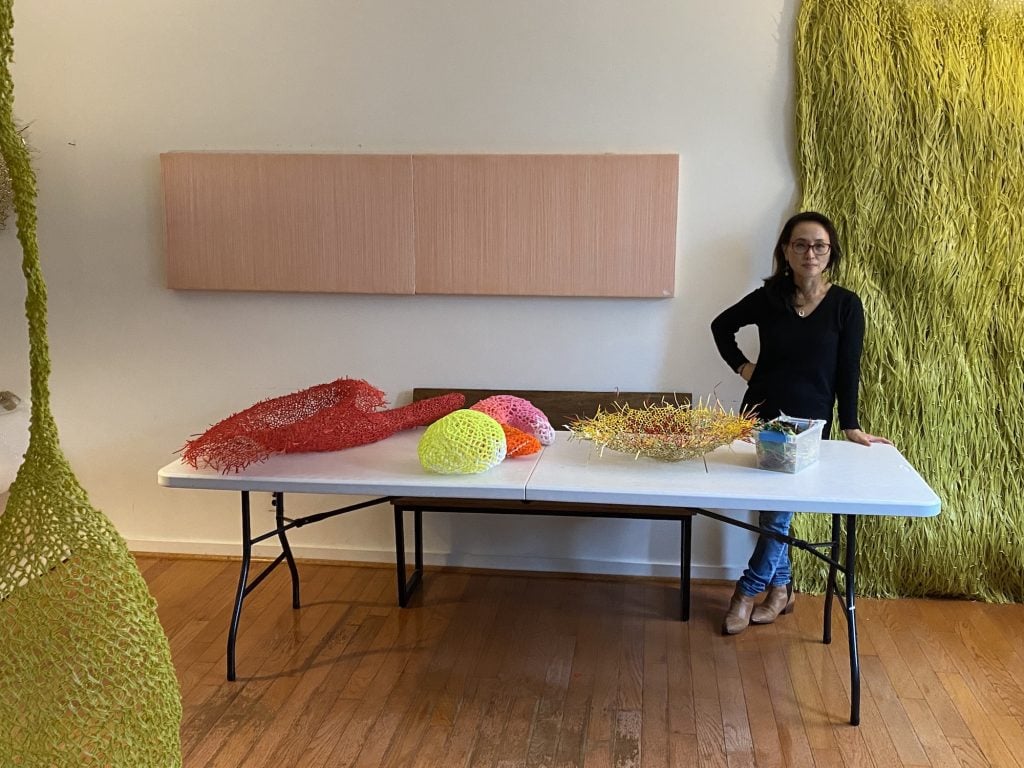
The artist’s debut museum exhibition “Threading Memories” is now on view at the Princeton University Art Museum.

Katie White

Twist ties, pipe cleaners, and spools of thread are neatly nestled in the home studio of artist MiKyoung Lee. These humble, craft-oriented materials form the basis of Lee’s practice; working through accumulation, the artist builds these everyday materials into intricate sculptures and installations, whose organic forms call to mind beehives, stalactites, and bird’s nests.
Lee, who grew up in South Korea, says her fascination with textiles emerged as a child, as she observed the important role and traditions of fabric in Korean culture. Now, the artist’s debut museum exhibition “Threading Memories / MiKyoung Lee,” curated by Zoe S. Kwok, is on view at Princeton University Art Museum’s Art@Bainbridge Gallery (through January 7, 2024).
With works reflecting different chapters in Lee’s life, the exhibition is a meditative one. The artist, who is also a professor at James Madison University, makes her work through a time-consuming process of knotting and tying materials together, imbuing the works with an inherently repetitive and contemplative quality. In the exhibition, Lee’s sculptures and wall works often form curved, apse-like shapes, offering viewers an opportunity to sit with their memories. On another level, however, the works are a poignant consideration of humanity’s relationship to the natural world, for although Lee’s forms are strikingly naturalistic in appearance, her materials are decidedly synthetic.
On the occasion of the exhibition, we spoke with Lee at her home studio in Virginia to learn how she came to her unusual materials and her favorite healthy snacks from H Mart.
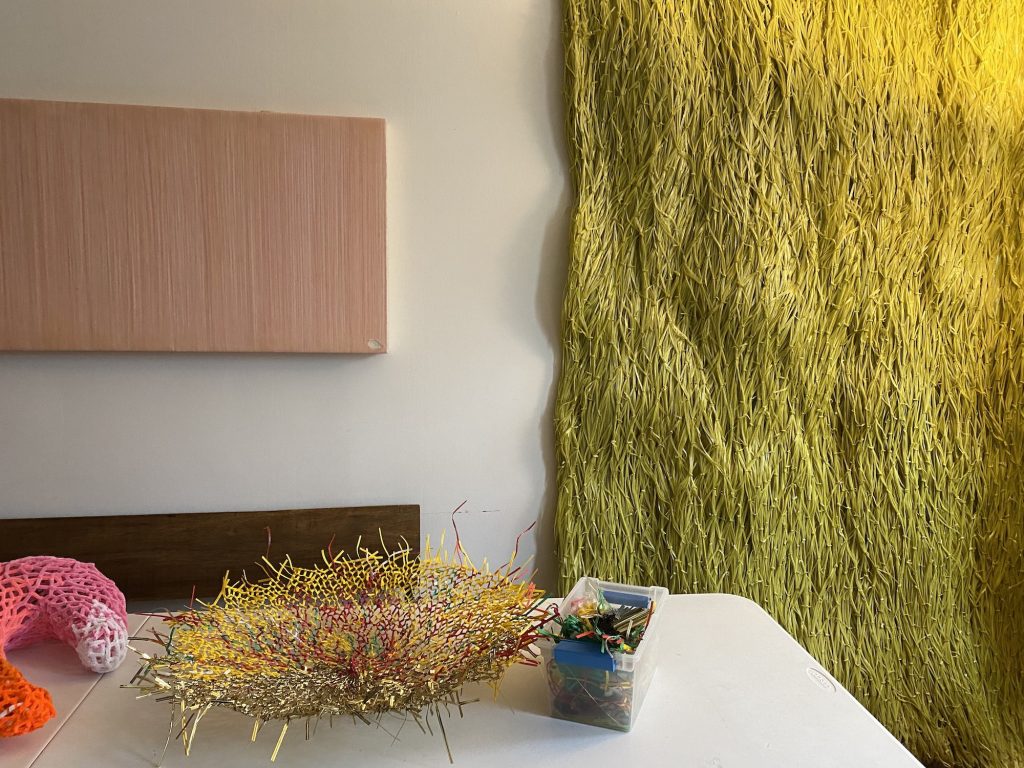
Works by MiKyoung Lee. Courtesy of Olivia Fitts and the artist.
Tell us about your studio. Where is it, how did you find it, what kind of space is it, etc.?
I usually work at home. After my basement studio was damaged by flood and after I had two children 15 years ago, my home studio has been the best resource for me. I have a clean wooden floor, wide walls, and a large table. I often work on the floor when I develop large-scale projects.
What made you choose this particular studio over others?
The home studio is convenient in many ways, and I love the flexibility and accessibility of the home studio space while taking care of my children, schedule, and time.
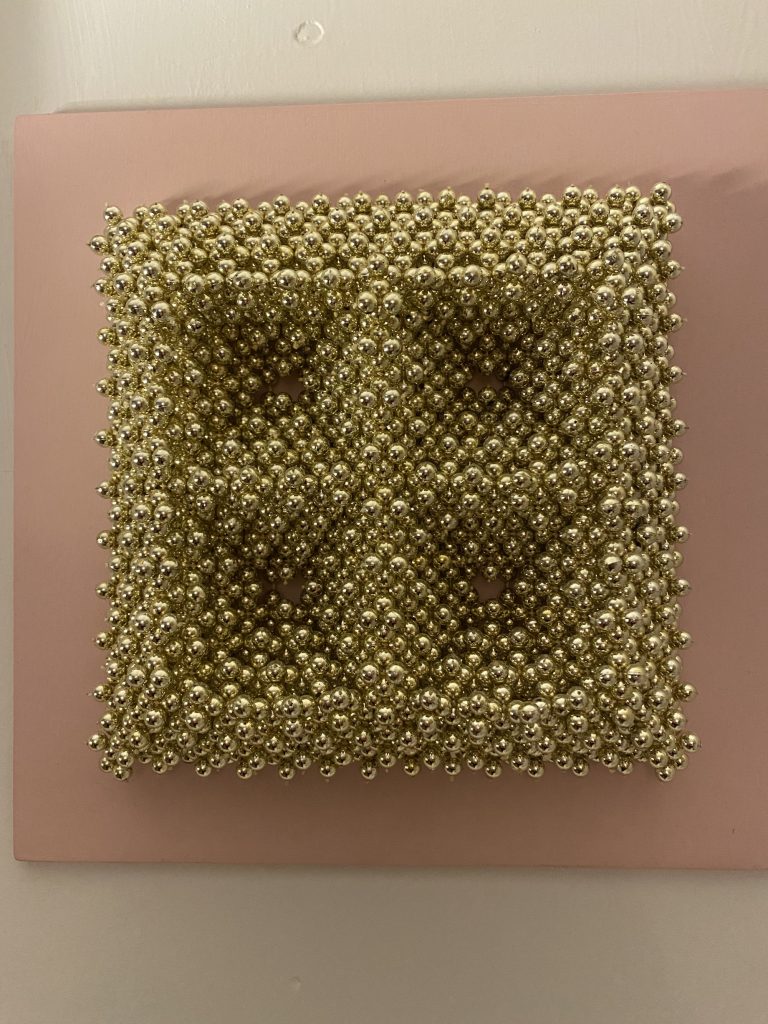
A mixed media work by Kelly Dzioba. Courtesy of MiKyoung Lee.
Do you have studio assistants or other team members working with you? What do they do?
I don’t usually have studio assistants when I work on small pieces. However, I have studio assistants, usually my students, who are paid when I work on large-scale projects.
How many hours do you typically spend in the studio, what time do you feel most productive, and what activities fill most of that time?
My studio hours are various. Since I work at the university, my studio hours are usually evenings and weekends. My most productive time is during the summer and winter break. I can work for many hours. I try to do drawings and sketches daily, even for a few minutes when I am super busy.
What is the first thing you do when you walk into your studio (after turning on the lights)?
I usually draw and review my sketches. But if I am in the middle of an ongoing project, I go directly to the process of making it.
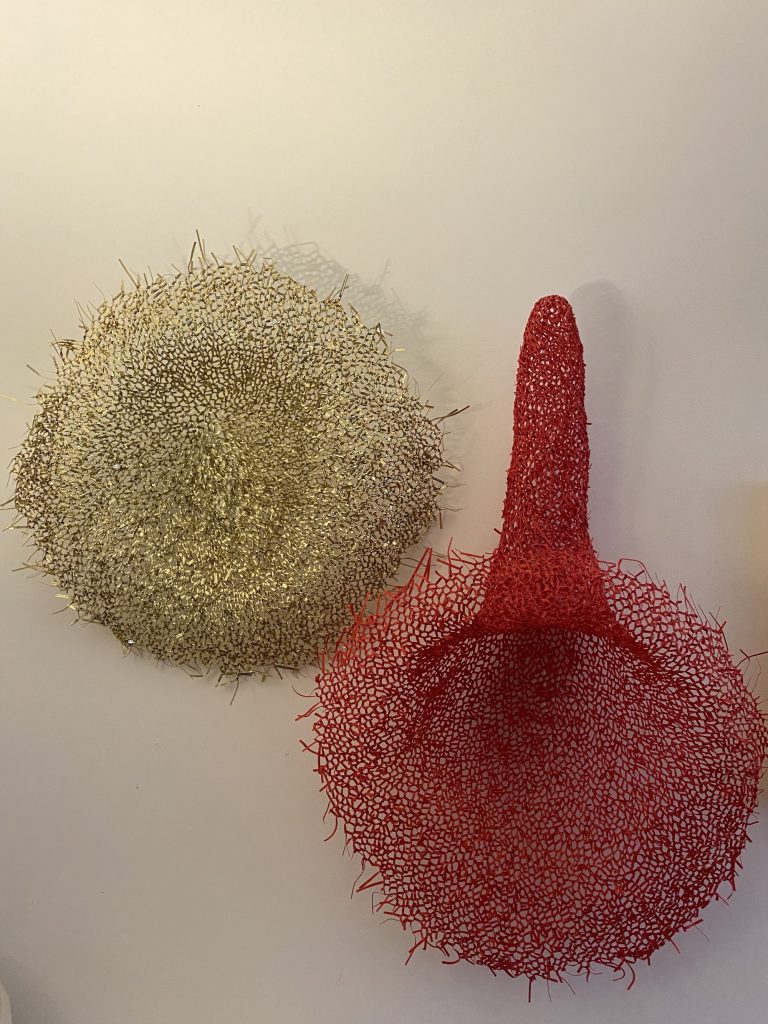
Works by MiKyoung Lee. Courtesy of Olivia Fitts and the artist.
What is a studio task on your agenda this week that you are most looking forward to?
I look forward to completing the two small sculpture projects for the upcoming Princeton University Art Museum exhibition.
What are you working on right now? Please send us a few smartphone shots of a work in progress—or photos of different works in various states of completion—in a way that you think will provide insight into your process.
I am working on the relief project with multi-color twist ties.
What tool or art supply do you enjoy working with the most, and why? Please send us a snap of it.
My tools and supplies have evolved and changed over the years. However, I have used twist ties and pipe cleaner to construct soft sculptures for the past fifteen years. To me, the twist ties represent commodity and consumerism. This material is flexible for me to play with. And I always feel connected to using thread in my work. I appreciate the delicacy and softness of the character in the thread as a material, which is a domestic element essential to our daily lives. I have a textile art background, and thread is a profound material that inspires me continuously about human history and culture.
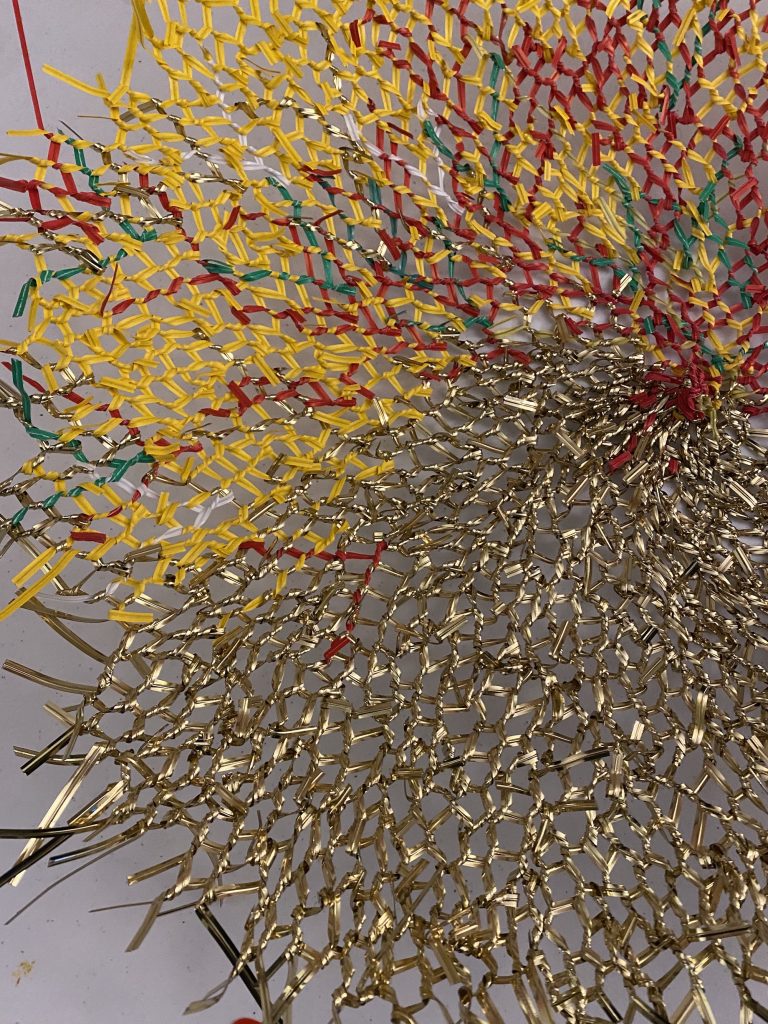
Works by MiKyoung Lee. Courtesy of Olivia Fitts and the artist.
What kind of atmosphere do you prefer when you work? Is there anything you like to listen to/watch/read/look at etc. while in the studio for inspiration or as ambient culture?
I love having a peaceful, quiet space with good light when I work, especially for drawings and idea sketches—piano or cello music I like to listen to when I work. But I often listen to radio, news, or speedy music when I am repetitive.
What images or objects do you look at while you work? Do you have any other artist’s work in your studio? If so, please share a phone pic and tell the story behind it.
I love looking at nature and natural images, especially microscopic ones. I have many objects, books, and paintings in my home studio. They include ceramics, drawings, photography, textiles, paintings from former students, colleagues, Jim Makins, Warren Seelig, Don Miller, and Kelly Dzioba, and family, my kids’ drawing and paintings, my husband, Tim Fitts’s photography, my mother-in-law, Patty Fitts’s paintings. These are all inspiring.
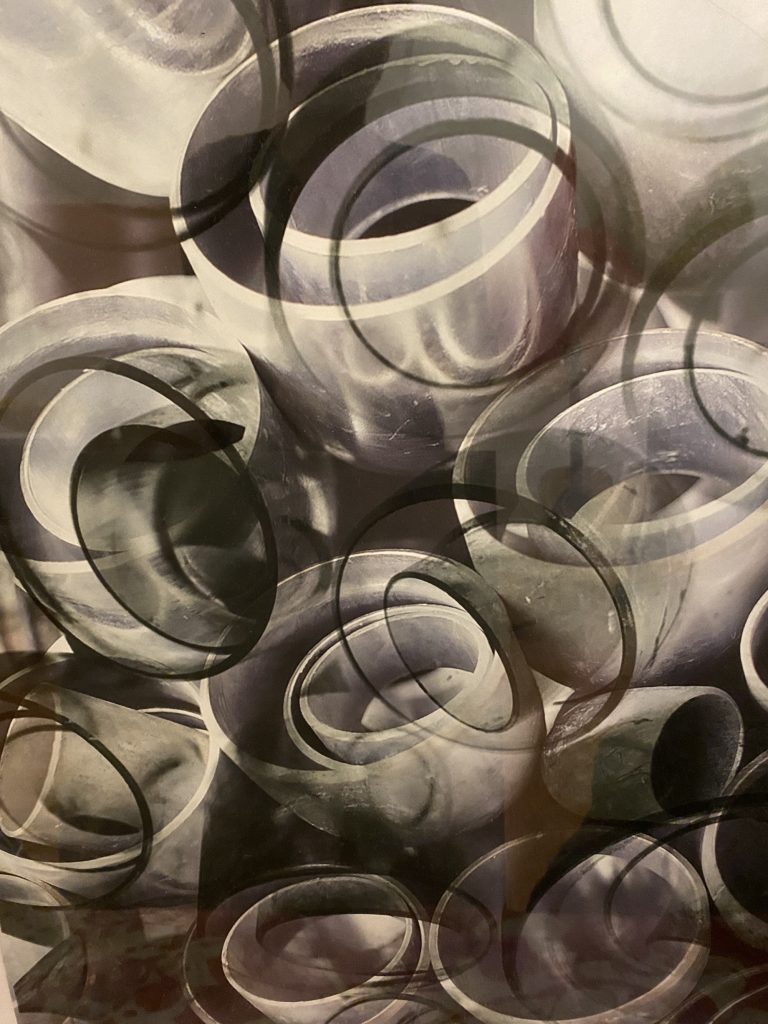
A photograph by Tim Fitts, the artist’s husband. Courtesy of Olivia Fitts and MiKyoung Lee.
Where do you get your food from, or what do you eat when you get hungry in the studio?
My family has various resources for our food, and we usually get groceries from H Mart, Whole Foods, and ALDI. I eat healthy food, and my snacks are generally bananas, nuts, dried or steamed sweet potatoes, and crackers.
How does your studio environment influence the way you work?
Space is so important, and I like space that is clean and pretty organized. I can’t function well when things are disorganized, and I do not feel good. I can focus better when my space provides positive energy.
Describe the space in three adjectives.
Sincere, bright, resourceful.
What’s the last thing you do before you leave the studio at the end of the day (besides turning off the lights)?
I like to clean and organize the space.
Revealed: The Major Mystery Consignors of New York’s Multi-Billion-Dollar Fall Auction Season
Christie’s Pulled Two Works by a Prominent Middle Eastern Artist From Sale After a Complaint